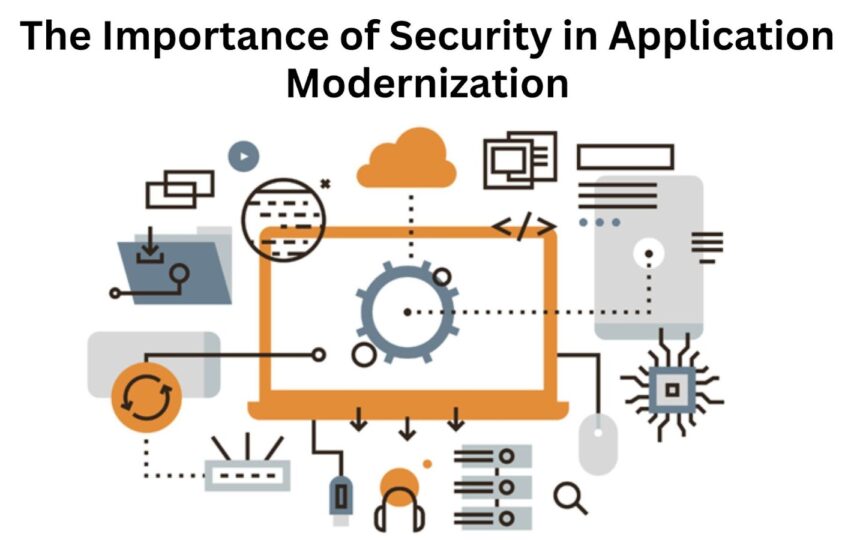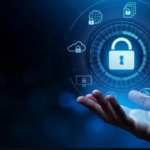As customers are becoming more agile and informed, legacy applications often stand as barriers to progress because user demand is bent towards convenience and omnichannel experience. Thus, application modernization services are a powerful mechanism to overhaul the system’s outdated technology and architecture, enabling it to keep up with changing business needs and leverage better ROI.
At the same time, legacy applications pose significant security and operational risks. Therefore, in a rapidly evolving business landscape, application modernization comes into play with necessary mitigation actions. However, the journey to application modernization is itself susceptible to technical, cultural, process, and security challenges.
Hence, it is essential to explore the intricacies of software modernization, its extensive importance, and deep-rooted challenges. This can help organizations successfully implement potential challenges and integrate the latest technologies.
Legacy Applications/ Systems: Why Do We Need to Modernize Them?
Utilizing cloud security best practices, regular monitoring, and modern automation tools, organizations can build applications that stay secure against unauthorized activity or malicious threats. With this, they can gain various significant advantages. Let’s discuss some of them:
- Enhanced Operational Efficiency
With AI technology, modern applications automate tasks, streamline processes, and eliminate redundancies, increasing efficiency and productivity. Moreover, repetitive or challenging assignments like managing your documents or capturing relevant information can be done in a timely and efficient manner.
- Better Security and Compliance
Legacy systems are employed with outdated security practices, leading to potential cyberattack targets. On the other hand, modernizing applications ensures that only authorized users access the data and allows organizations to implement robust security measures.
Moreover, application security testing ensures that users’ privileges do not get exploited and, at the same time, encrypts information to implement compliance and security best practices.
- Improved Performance With Reduced IT Complexity
In application modernization, advanced technologies like cloud computing and AI are integrated. This helps to improve application performance and agility. Also, break your software into smaller, self-contained modules, using multiple clouds and edge locations, and managing complexity levels.
- Cost-effective Solutions
The initial investment in overhauling the complex legacy application can be costly and also challenging in recognizing areas of improvement and successful implementation.
However, in the long term, application modernization offers benefits like increased efficiency, reduced downtime, and improved security. These cost-saving benefits far outweigh the upfront expenses.
Pillars to Restructure the Application Modernization in Your Organization
To enhance business processes and improve the customer experience, a solid app modernization strategy is essential. Therefore, most businesses opt for application modernization services to revitalize their legacy system.
- Effective Customer Experience
With application modernization, organizations prioritize user experience, offering intuitive interfaces and seamless interactions across multiple channels. In addition, with personalized services, they can facilitate a holistic customer experience.
- Modernized Business Model
Embracing digital transformation in application modernization, organizations can reimagine their business processes. This is done through adopting agile methodologies and leveraging data-driven insights to drive innovation and growth.
- Intelligent Technology Integration
Your business can enhance its organizational functionality by optimizing operations and incorporating emerging technologies such as AI, IoT, and blockchain. Not only that, but these modern technologies also help create new revenue streams.
- Connected Operations
IoT and RPA are the technologies that make an integrated system. Organizations can foster collaboration between departments and cross-functional teams with such systems and real-time communication tools.
Security and Compliance Solutions Accelerating Application Modernization
In the current modern world, complex network structures have been normalized. Consequently, traditional security measures are no longer effective for a completely threat-proof and future-proof system.
Hence, organizations follow more regulated practices to avoid data breaches.
- Empowering Teams With DevSecOps Applications
With IT security and DevOps infused into every step of the software lifecycle, modernized applications empower teams with improved app security. Moreover, the powerful DevSecOps framework reduces cybersecurity risks at lower costs with increased time-to-impact of the application.
Moreover, by integrating security into the development pipeline with DevSecOps, your team can rectify vulnerabilities early in the software development lifecycle. Additionally, several security and compliance challenges can be resolved by adopting these practices.
- Establishing a collaborative and shared responsibility culture for a team to fight against potential anomalies. With changing an organization’s mindset and behaviors regarding software security, a collective effort towards risk-free modern application can be made.
- With privacy & compliance functions in the agile SDLC process, the challenges in smooth translation into DevOps and gaps in compliance and development can be appropriately addressed.
- Manual testing, deployment, and patching process is a challenge to time-to-market and eventually in mitigating security risks. Therefore, a holistic end-to-end automation framework (Measure, Monitor, Report) is implemented to reduce vulnerabilities by automating code and security quality checks.
- Cloud Security Alliance (CSA) for Data Integrity and Security
Storing and managing data on a centralized server increases the operational risk. However, with the CSA forum, your team can leverage better security guidance, creating and maintaining a trusted cloud ecosystem. Also, the framework provided by this organization ensures data integrity, confidentiality, and availability in cloud environments.
- Reduce Attack Surface by Adopting Emerging Containers
Containers and container orchestration platforms (Kubernetes) are rapidly growing as part of DevSecOps due to emerging infrastructure. This growth is continuously surging, and more and more organizations are expected to run apps in containers. With a variety of state-of-the-art functionalities, Kubernetes is recommended to enable DevSecOps.
It ensures capabilities like continuous integration and continuous delivery with immutable infrastructure, offering benefits like environment consistency and zero downtime deployments.
- Secure Configuration With Continuous Maintenance
Enable the DevOps pipeline for agile deployment and continued security for the lifecycle management. Therefore, robust security measures are not just about initial implementation; instead, planning for the secure configuration of a device, including an initial deployment with continuous maintenance.
Furthermore, during migration, it is essential to ensure the streamlined installation of security agents or server orchestration is performed correctly the first time. Conducting such tasks, post-installation can increase complexity and introduce potential risks.
Therefore, do not wait for security patching but automate the deployment of updates, accelerating the security monitoring process and configuring security settings. Additionally, conduct vulnerability assessments to stay ahead of evolving threats and compliance requirements.
- Training and Security Leadership
The important aspect to note in boosting the security of your infrastructure is that the human element is said to be the weakest link in cybersecurity. Thus, your employees must become a firewall for security parameters to become effective.
Therefore, it is recommended that investment be made in employee training programs. Moreover, security leadership is critical to ensuring a security awareness and accountability culture.
Besides, organizations can follow the given practices:
- Data encryption to protect sensitive data during transmission.
- Penetration testing to identify and resolve vulnerabilities.
- Security passwords with multifactor authentication (MFA).
- Maintaining security compliance practices.
- Regular maintenance and upgrading schedule.
Conclusion
Most enterprises and organizations, from the healthcare industry to the financial sector, are vulnerable to security attacks in today’s digital world. This can lead to financial and reputational damages to your business. No organization can claim to have remained safe from data theft, leakage, or loss due to security breaches.
However, they can enhance their security infrastructure by integrating security measures with application modernization services. Moreover, application development is no longer linear; in fact, it requires a coordinated team approach to DevSecOps. This change is occurring with driving forces like the disruptor t, data compliance regulations, and the need for cloud-native development.
Hence, the importance of security in application modernization helps to safeguard the system from unauthorized access, increasing performance and reliability.








